
Messier 58 is an intermediate barred spiral galaxy with a weak inner ring structure located within the constellation Virgo, approximately 68 million light-years away from Earth. It was discovered by Charles Messier on April 15, 1779 and is one of four barred spiral galaxies that appear in Messier's catalogue. M58 is one of the brightest galaxies in the Virgo Cluster. From 1779 it was arguably the farthest known astronomical object until the release of the New General Catalogue in the 1880s and even more so the publishing of redshift values in the 1920s.

Messier 94 is a spiral galaxy in the mid-northern constellation Canes Venatici. It was discovered by Pierre Méchain in 1781, and catalogued by Charles Messier two days later. Although some references describe M94 as a barred spiral galaxy, the "bar" structure appears to be more oval-shaped. The galaxy has two ring structures.

NGC 4536 is an intermediate spiral galaxy in the constellation Virgo located about 10° south of the midpoint of the Virgo cluster. However, it is not considered a member of the cluster. Rather, it is a member of the M61 Group of galaxies, which is a member of the Virgo II Groups, a series of galaxies and galaxy clusters strung out from the southern edge of the Virgo Supercluster. The morphological classification in the De Vaucouleurs system is SAB(rs)bc, which indicates it is a weakly barred spiral galaxy with a hint of an inner ring structure plus moderate to loosely wound arms. It does not have a classical bulge around the nucleus.
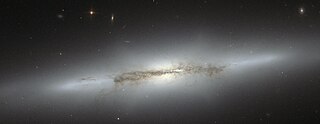
NGC 4710 is an edge-on lenticular galaxy in the northern constellation of Coma Berenices. It was discovered on March 21, 1784 by German-British astronomer William Herschel. This galaxy has a B-band visual magnitude of 11.60 and an angular size of 3.0′ × 0.8′. It is located at a distance of 54.5 ± 3.6 million light-years (16.7 ± 1.1 Mpc) from the Milky Way, and is receding with a heliocentric radial velocity of 1,129 km/s. This is a member of the Virgo Cluster, with a projected offset of ~6° from the cluster center and a cluster crossing time of around two billion years.

NGC 5746 is a barred spiral galaxy located in the eastern part of the constellation of Virgo. It is a member of the NGC 5746 Group of galaxies, itself one of the Virgo III Groups strung out to the east of the Virgo Supercluster of galaxies.
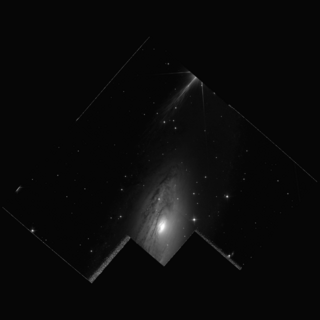
NGC 7013 is a relatively nearby spiral or lenticular galaxy estimated to be around 37 to 41.4 million light-years away from Earth in the constellation of Cygnus. NGC 7013 was discovered by English astronomer William Herschel on July 17, 1784 and was also observed by his son, astronomer John Herschel on September 15, 1828.

NGC 7020 is a barred lenticular galaxy located about 140 million light-years away in the constellation Pavo. NGC 7020 was discovered by astronomer John Herschel on August 31, 1836.

NGC 4699 is an intermediate spiral galaxy located in the constellation Virgo. It is located at a distance of about 65 million light years from Earth, which, given its apparent dimensions, means that NGC 4699 is about 85,000 light years across. It was discovered by William Herschel in 1786. It is a member of the NGC 4699 Group of galaxies, which is a member of the Virgo II Groups, a series of galaxies and galaxy clusters strung out from the southern edge of the Virgo Supercluster.
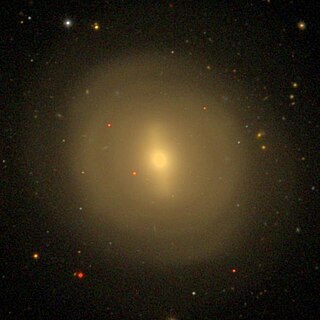
NGC 4477 is a barred lenticular galaxy located about 55 million light-years away in the constellation of Coma Berenices. NGC 4477 is classified as a type 2 Seyfert galaxy. The galaxy was discovered by astronomer William Herschel on April 8, 1784. NGC 4477 is a member of Markarian's Chain which forms part of the larger Virgo Cluster.

NGC 4340 is a double-barred lenticular galaxy located about 55 million light-years away in the constellation of Coma Berenices. NGC 4340 was discovered by astronomer William Herschel on March 21, 1784. NGC 4340 is a member of the Virgo Cluster. NGC 4340 is generally thought to be in a pair with the galaxy NGC 4350.
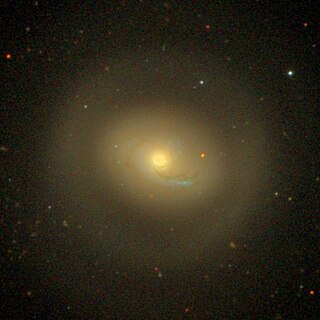
NGC 4457 is an intermediate spiral galaxy located about 55 million light-years away in the constellation of Virgo. It is also classified as a LINER galaxy, a class of active galaxy defined by their spectral line emissions. NGC 4457 Is inclined by about 33°. It was discovered by astronomer William Herschel on February 23, 1784. Despite being listed in the Virgo Cluster Catalog as VCC 1145, NGC 4457 is a member of the Virgo II Groups which form an extension of the Virgo cluster.

NGC 4429 is a lenticular galaxy located about 55 million light-years away in the constellation of Virgo. NGC 4429 is tilted at an inclination of about 75° which means that the galaxy is tilted almost edge-on as seen from Earth. NGC 4429 was discovered by astronomer William Herschel on March 15, 1784. The galaxy is a member of the Virgo Cluster.

NGC 4689 is a spiral galaxy located about 54 million light-years away in the constellation of Coma Berenices. NGC 4689 is also classified as a LINER galaxy. NGC 4689 is inclined at an angle of about 36° which means that the galaxy is seen almost face-on to the Earth's line of sight. NGC 4689 was discovered by astronomer William Herschel on April 12, 1784. The galaxy is a member of the Virgo Cluster.

NGC 3726 is a barred spiral galaxy located in the constellation Ursa Major. It is located at a distance of circa 45 million light years from Earth, which, given its apparent dimensions, means that NGC 3726 is about 85,000 light years across. It was discovered by William Herschel on February 5, 1788.

NGC 4570 is an edge-on lenticular galaxy located about 57 million light-years away in the constellation Virgo. NGC 4570 was discovered by astronomer William Herschel on April 13, 1784 and is a member of the Virgo Cluster.

NGC 4580 is an unbarred spiral galaxy located about 70 million light-years away in the constellation Virgo. NGC 4580 is also classified as a LINER galaxy. It was discovered by astronomer William Herschel on February 2, 1786 and is a member of the Virgo Cluster.
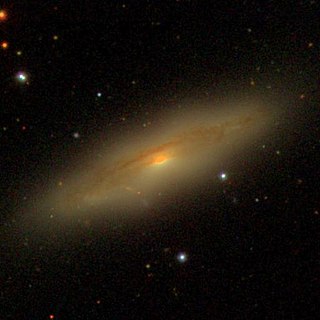
NGC 4586 is a spiral galaxy located about 50 million light-years away in the constellation Virgo. The galaxy was discovered by astronomer William Herschel on February 2, 1786. Although listed in the Virgo Cluster Catalog, NGC 4586 is considered to be a member of the Virgo II Groups which form a southern extension of the Virgo cluster. NGC 4586 is currently in the process of infalling into the Virgo Cluster and is predicted to enter the cluster in about 500 million years.

NGC 4596 is a barred lenticular galaxy located about 55 million light-years away in the constellation Virgo. NGC 4596 was discovered by astronomer William Herschel on March 15, 1784. NGC 4596 is a member of the Virgo Cluster and has an inclination of about 38°.

NGC 4299 is a featureless spiral galaxy located about 55 million light-years away in the constellation Virgo. It was discovered by astronomer William Herschel on March 15, 1784 and is a member of the Virgo Cluster.

NGC 4324 is a lenticular galaxy located about 85 million light-years away in the constellation Virgo. It was discovered by astronomer Heinrich d'Arrest on March 4, 1862. NGC 4324 has a stellar mass of 5.62 × 1010M☉, and a baryonic mass of 5.88 × 1010M☉. The galaxy's total mass is around 5.25 × 1011M☉. NGC 4324 is notable for having a ring of star formation surrounding its nucleus. It was considered a member of the Virgo II Groups until 1999, when its distance was recalculated and it was placed in the Virgo W Group.




















